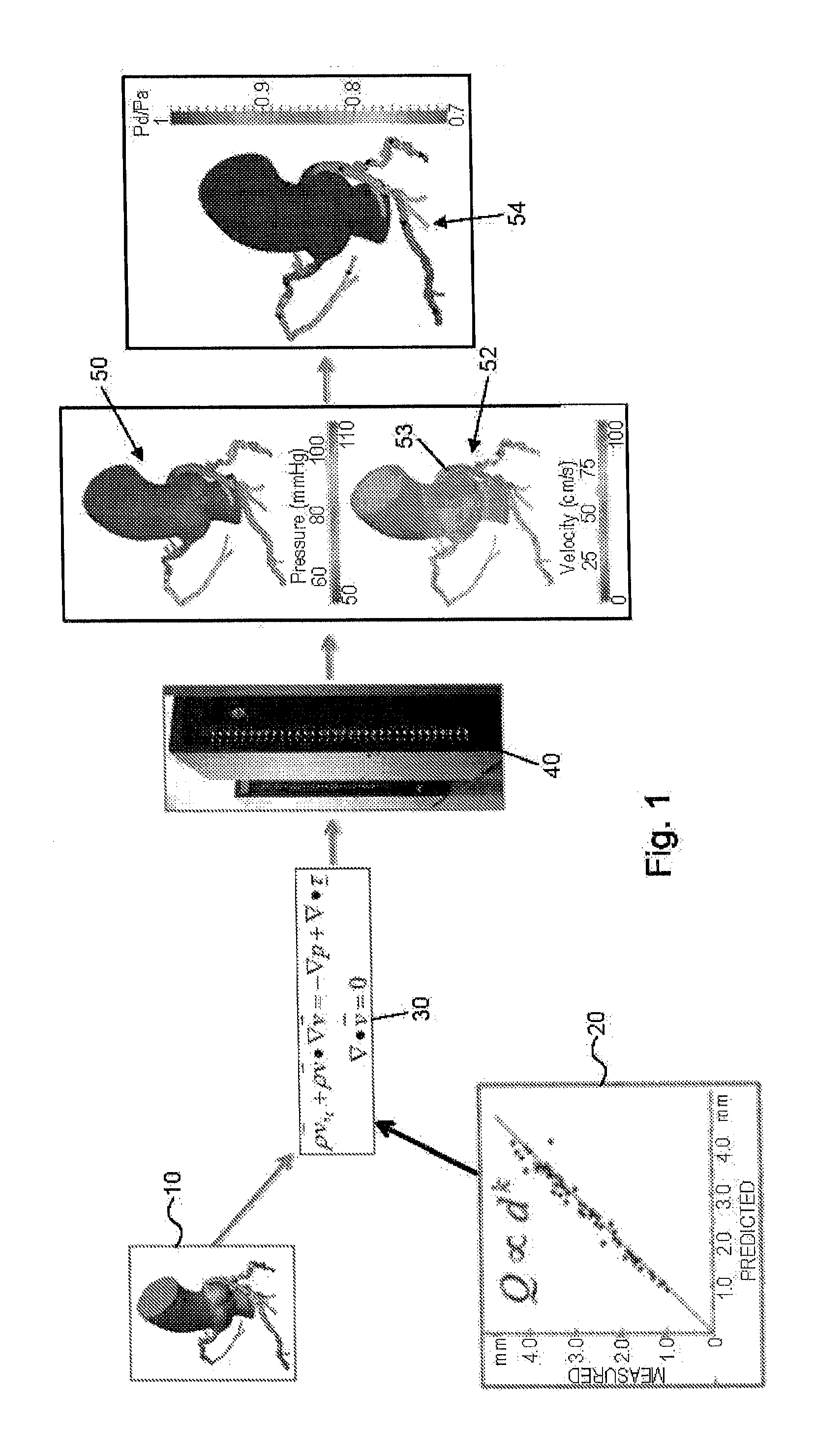Method and system for determining treatments by modifying patient-specific geometrical models
a geometric model and patient technology, applied in the field of methods and systems for determining treatment options, can solve the problems of limiting blood flow to the heart, myocardial infarction, heart attack, etc., and unable to provide direct assessment of coronary lesions or assess blood flow rates
- Summary
- Abstract
- Description
- Claims
- Application Information
AI Technical Summary
Benefits of technology
Problems solved by technology
Method used
Image
Examples
Embodiment Construction
[0056]Reference will now be made in detail to exemplary embodiments, examples of which are illustrated in the accompanying drawings. Wherever possible, the same reference numbers will be used throughout the drawings to refer to the same or like parts. This description is organized according to the following outline:[0057]I. Overview[0058]II. Obtaining and Preprocessing Patient-Specific Anatomical Data[0059]III. Creating The Three-Dimensional Model Based On Obtained Anatomical Data[0060]IV. Preparing The Model For Analysis and Determining Boundary Conditions[0061]A. Preparing the Model For Analysis[0062]B. Determining Boundary Conditions[0063]i. Determining Reduced Order Models[0064]ii. Exemplary Lumped Parameter Models[0065]C. Creating the Three-Dimensional Mesh[0066]V. Performing The Computational Analysis And Outputting Results[0067]A. Performing the Computational Analysis[0068]B. Displaying Results for Blood Pressure, Flow, and cFFR[0069]C. Verifying Results[0070]D. Another Embod...
PUM
 Login to View More
Login to View More Abstract
Description
Claims
Application Information
 Login to View More
Login to View More - R&D
- Intellectual Property
- Life Sciences
- Materials
- Tech Scout
- Unparalleled Data Quality
- Higher Quality Content
- 60% Fewer Hallucinations
Browse by: Latest US Patents, China's latest patents, Technical Efficacy Thesaurus, Application Domain, Technology Topic, Popular Technical Reports.
© 2025 PatSnap. All rights reserved.Legal|Privacy policy|Modern Slavery Act Transparency Statement|Sitemap|About US| Contact US: help@patsnap.com



